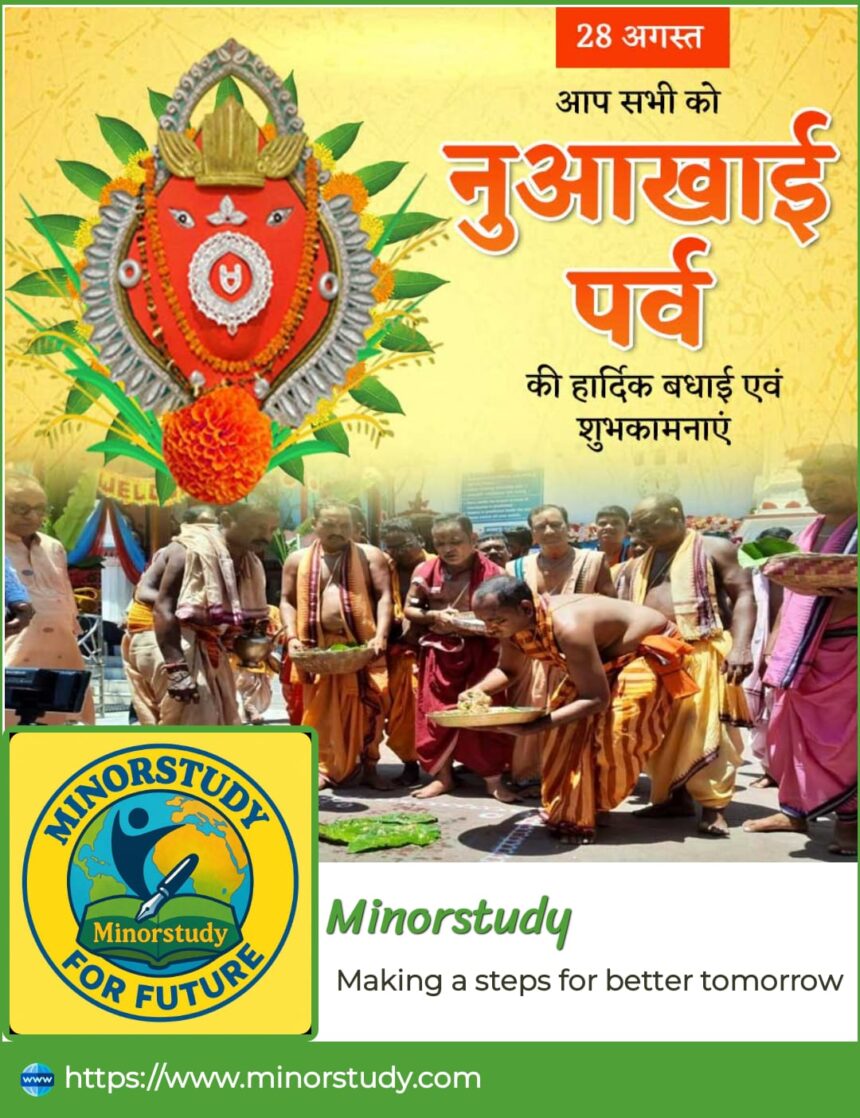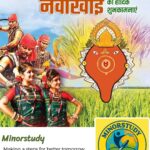🌟 Introduction
India is a land of countless harvest festivals, each deeply rooted in the relationship between people, food, and gratitude towards Mother Earth. One such unique celebration is Nuaakhaee Parv, a festival that beautifully blends culture, agriculture, and spirituality.
Observed with great devotion in Odisha, Nuaakhaee is not just about offering the first grains of harvest to Goddess Samaleswari, but also about honoring farmers, food, and the divine cycle of nature.
This article explores everything about Nuaakhaee Parv—its history, facts, rituals, timeline, significance, wishing messages, daily life impacts, and FAQs—and how it continues to shape our modern society with timeless values.
🌾 What is Nuaakhaee Parv?
The word “Nuaakhaee” comes from two Odia words:
“Nua” meaning new
“Khaee” meaning food or eating
Thus, Nuaakhaee means eating the new harvest.
Celebrated mainly in Western Odisha districts like Sambalpur, Balangir, Bargarh, and Kalahandi, it is an agrarian festival where the first harvested rice (Nabanna) is offered to the presiding deity, Maa Samaleswari, the mother goddess of Sambalpur.
After offering prayers, families cook the new rice, prepare delicious dishes, and enjoy it together, marking gratitude for food, prosperity, and divine blessings.
🏛️ History of Nuaakhaee
The roots of Nuaakhaee trace back to Vedic traditions of agricultural offerings:
In ancient India, farmers would first offer a portion of the first harvest to gods before consuming it themselves.
The Sambalpur region of Odisha institutionalized this practice, associating it with Maa Samaleswari, the presiding goddess of Western Odisha.
Historical records suggest that tribal communities also celebrated similar festivals of “first eating” to thank nature spirits.
Over centuries, it evolved into a regional festival observed across all communities, highlighting the unity of people through food and farming.
📜 Timeline of Nuaakhaee
Prehistoric Period: Tribal rituals of offering first grains to nature deities.
Vedic Period (1500 BCE – 500 BCE): Agricultural communities adopted offerings of first produce to gods.
Medieval Odisha: Kings and landlords institutionalized offerings to Maa Samaleswari before harvesting.
Modern Times (20th–21st Century): Became a grand social festival in Western Odisha, celebrated by all with prayers, feasts, cultural programs, and social harmony.
✅ Significance of Nuaakhaee
Gratitude to Nature – Expresses thanks to Mother Earth, rivers, and weather for crops.
Respect for Farmers – Recognizes the hard work of cultivators.
Spiritual Purity – First harvest is sanctified before consumption.
Family Unity – Families gather to cook and eat the new grain together.
Community Bonding – Celebrated as a social festival beyond religion or caste.
Cultural Heritage – Keeps alive traditional folk songs, dances, and Odia rituals.
Sustainable Living – Teaches respect for food, discouraging wastage.
🪔 Observance & Rituals
Before the Festival
Farmers prepare fields and harvest paddy in small quantities.
Families clean homes, prepare kitchens, and collect ingredients.
On the Day of Nuaakhaee
Offering to Maa Samaleswari:
The new rice is first offered to the goddess with prayers.
Devotees seek blessings for prosperity and protection from natural calamities.
Family Feast:
Women cook dishes from new rice like Pakhala Bhata, Pitha, Khichdi, and Kheer.
Families eat together after the offering.
Community Celebrations:
Villages organize folk songs, Sambalpuri dance, and dramas.
People visit relatives and exchange greetings.
Special Prayers for Farmers:
Community prayers are held for a good harvest season.
🌍 Daily Life Impacts
Gratitude Practice: Reminds us to thank nature and farmers for every meal.
Family Values: Strengthens family bonds through shared meals.
Cultural Identity: Keeps younger generations connected with Odia heritage.
Mindful Eating: Encourages valuing food and avoiding wastage.
Eco-Spirituality: Promotes harmony between humans and the environment.
📊 Interesting Facts About Nuaakhaee
It usually falls on Bhadraba Shukla Panchami (August–September).
The day is considered so sacred that no one eats the new rice before offering it to Maa Samaleswari.
The festival has close similarities with Onam (Kerala), Nabanna (Bengal), Nuakhai Juhar (Chhattisgarh).
The traditional greeting during the festival is “Nuakhai Juhar”, which means respectful greetings on Nuakhai.
Nuaakhaee is recognized as a festival of social harmony, as all communities—irrespective of caste or creed—celebrate together.
💌 Wishing Messages for Nuaakhaee
“🌾 May Maa Samaleswari bless you with health, wealth, and happiness. Happy Nuaakhaee Parv!”
“✨ On this Nuaakhaee, let’s thank Mother Earth and our farmers for the food we eat every day.”
“🥘 May the new harvest bring joy, prosperity, and togetherness in your life. Nuakhai Juhar!”
“🌟 Wishing you abundance, happiness, and peace on this blessed Nuaakhaee Parv.”
📌 Important Points
Nuaakhaee celebrates first harvest eating.
It is most popular in Western Odisha.
Associated with Maa Samaleswari of Sambalpur.
Rituals involve offering new rice, cooking traditional dishes, and cultural programs.
Greeting phrase: Nuakhai Juhar.
❓ FAQs
Q1. Which goddess is associated with Nuaakhaee?
Maa Samaleswari, the presiding goddess of Sambalpur.
Q2. Why is it called Nuaakhaee?
Because it celebrates eating of newly harvested rice (“Nua” = new, “Khaee” = eat).
Q3. Is it only a farmers’ festival?
No. While rooted in agriculture, it is celebrated by all communities as a festival of gratitude and unity.
Q4. What is the traditional greeting during Nuaakhaee?
Nuakhai Juhar.
Q5. Which states celebrate similar festivals?
Odisha (Nuaakhaee), Bengal (Nabanna), Kerala (Onam), and Chhattisgarh (Nuakhai Juhar).
🏆 Importance in Our Life & Society
Social Unity: Breaks caste, religion, and class barriers.
Cultural Preservation: Passes traditions, songs, and dances to the next generation.
Mental Well-Being: Gratitude practices reduce stress and bring positivity.
Sustainability: Teaches respect for food and agriculture.
Economic Impact: Boosts local markets with festive shopping, cooking, and cultural programs.
📝 Conclusion
Nuaakhaee Parv is not just a harvest festival—it is a festival of gratitude, togetherness, and life itself.
It reminds us that every grain of rice is a blessing of nature, a farmer’s hard work, and divine grace. In today’s fast-moving world, where we often forget the source of our food, Nuaakhaee brings us back to our roots, our soil, and our cultural identity.
By celebrating Nuaakhaee, we don’t just honor a tradition—we honor nature, family, unity, and the timeless bond between humans and food.
So this year, when you greet someone with Nuakhai Juhar, remember it’s not just a wish, but a reminder to live with gratitude, joy, and respect for life.









Thank you for every other informative website. The place else could I get that kind of information written in such an ideal means? I have a project that I am just now working on, and I have been at the look out for such info.